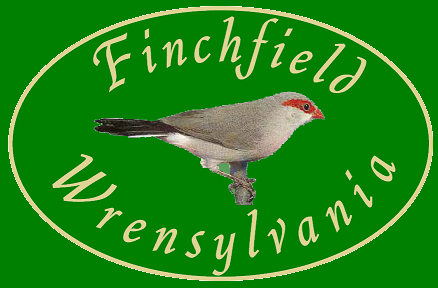|
The name of our railroad is a play on the names of the Clinchfield
and Pennsylvania railroads.
While most Texas yards have minimal contouring,
we have acquired about 85 tons of dirt and rock transforming
the entire back
yard into our garden railway. Because of the huge mess
this created, work occurred almost nonstop any day the weather
has been remotely humanly tolerable. Did you know you
can solder track when it is as cold out as 52 degrees?
This is a "running" layout. It's
too hot in Texas to operate outdoors! Operations take
place on the HO High & Xiety indoors
and air conditioned. The F&W consists of about 500'
of
mainline track in three independent loops. All loops are joined by turnouts
permitting all trains to run into the garage where a yard allows quick storage
and retrieval of trains without taking them off the track |
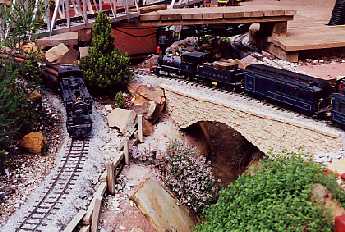 |
The trains run through four tunnels
and 14 bridge systems. Some
of the bridge systems consist of trestle(s) and more than one
bridge.
For a natural appearance, dirt was dumped
about where I needed it, but I decided not worry about shaping
the dirt perfectly
to the track plan. Instead, the track would follow the
terrain. If a fill or a cut was needed, so be it. This
also made bending the rail a good bit more work as there are
many places the track is not straight or smoothly curved as
it follows the lay of the land. |
| |
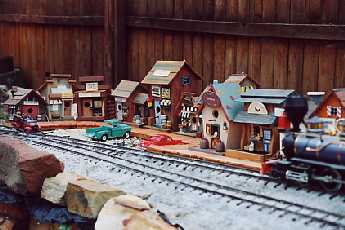 |
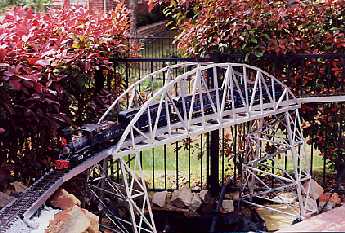 |
If it is possible for a garden railroad
to be too big, this one is close if not it. Now that all the tracks are installed,
it is already clear that keeping everything in running condition
while continuing with construction is going to be a real challenge. Hence
the use of metal bridges to avoid further maintanence. The
cuts to the tunnels, where the dirt frequently oozed through
the rocks, has had concrete added behind the rocks to prevent
the problem.
This is the outdoor test track
for the "Wiring
for DCC" website. Check out the website
for DCC control of an LGB track cleaning locomotive and
the
Bachmann Shay with Soundtraxx sound, as well as the section
on DCC in the garden for lightning suppression on outdoor
tracks and turnouts. |
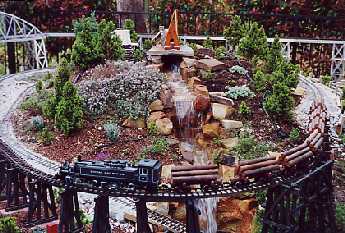 |
Is that really your backyard?
Yes!
Where did you get the
idea for this?
I first saw one of these in the mid '80's.
Where did you get the
idea to use birdhouses?
Before we bought any buildings, we saw one in '92. It was about
the right size, it was already assembled and painted, had a lot of charm, and
was half the price of garden railroad building kits. After we acquired the
fourth one, we decided to stick with them. Now they are easily gotten at craft
stores and shows, discount stores, supermarkets, and even department stores.
Most are under $15. |
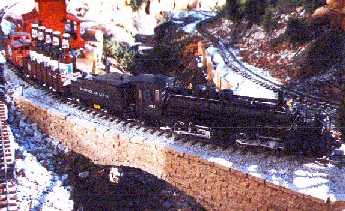 |
Look! It is the beer train!
(Proof that a garden
railroad can be useful!)
How long have you been building
this?
It took four years to build and requires about three months a year of maintenance.
How many hours do you think you have
put in on this?
I don't want to think about it!
I worked on it every single weekend that it wasn't raining and at least 52 degrees.
How much have you spent on this?
See above answer! |
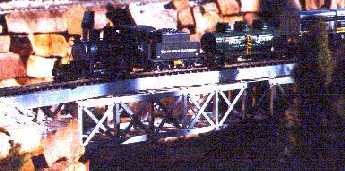 |
How big is it?
It is about 35' by 40'. It occupies
the entire postage stamp yard.
How do you mow the
grass?
Look carefully. There is no grass at all. There is no way to mow
it if we had it. So it is intentional that there is absolutely
no grass. |
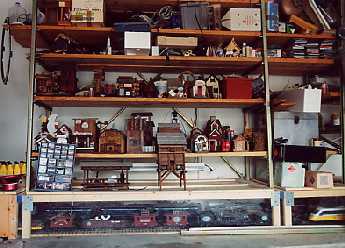 |
What do you do about the weather?
Drive the trains into the garage!This
is probably the most important feature of this railroad. All
three of the independent loops connect together so that every train can either
go over the stone viaduct, or one of the wooden bridges via a wye into a five
track yard in the garage. This yard runs the length of the three car
garage. It can store seven trains. The yard is plexiglass encased
with lids, lit by flourescent lighting, under storage shelves - which, among
other things, hold the birdhouses for our garden railroad. The track,
which obviously stays outside, endures the weather fine. Cementing of
the track and subroadbed (cement is the second most important feature) helps
the track deal with the shifting dirt and forces of expansion and contraction. As
long as nature hasn't done a serious number on rail gauging, a quick wipe of
the track is all that is required and trains can be running in minutes. |
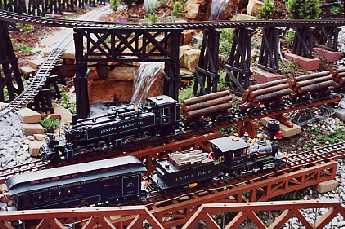 |
The trains are
pulled into a 5 track yard under shelving in the garage. The
plexiglass-encased yard helps keep dust off the train trains
as well as afford protection from
something being dropped from the above shelves - which obviously
store the birdhouses for the railroad as well as the usual
garage stuff.
What scale is this?
It's common name is G-scale and is a ratio of
1:22.5. It is not completely standardized so some of our equipment
is 1:20.3 or 1:29. Some of the people and vehicles are a standard
dollhouse size of 1:24. Close enough! The spacing between the
rails is 1-7/8" |
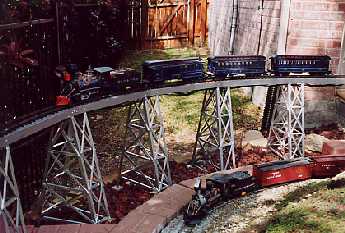 |
How did you get all the
dirt and rock get here?
All the dirt and rock was moved by 10 cu. ft. wheel barrow. In
most cases, it was all moved from the driveway. Some of it, the truck was backed
up to the gate so we didn't have as far to go. Neither side yard was big enough
to get a Bobcat through. When moving the material from the driveway, about
a ton per hour could be moved.
How did I get interested in trains?
What else is a kid to do?
|
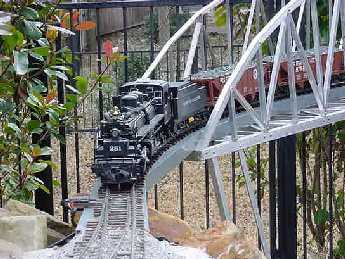 |
How are the trains controlled? Are they battery
powered?
Some garden railroads use battery power. Due to the cost, weight, short running
time of batteries, as well as the quality of sound systems that require a connection
to the track, battery power is not used on the F-W.
The vast majority of the locomotives on the F&W use DCC - Digital Command Control; primarily for the sophisticated
sound systems available for it. The track has a constant 18V of AC on it to power the trains. |
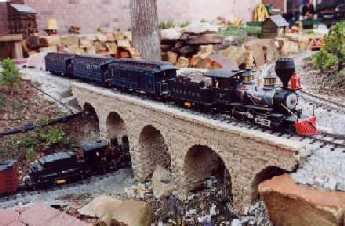 |
This viaduct was originally
to be a simple wooden bridge. But when huge ugly green
things, generally called "horse
apples" started falling from the trees in the fall, I decided
to instead to build a steel reinforced concrete bridge clad
in stone to withstand being pelted by these inedible "fruits."
Needless to say, the name of this viaduct is "Horse Apple Viaduct" Click
here to see a horse apple blocking a Mogal
|
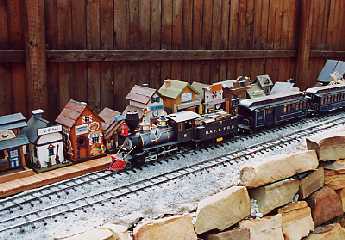 |
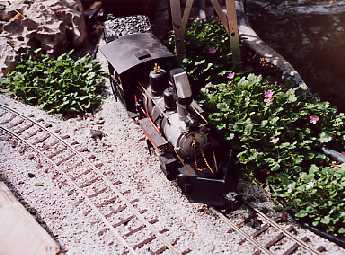 |
